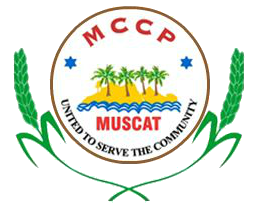OUR LANGUAGE
ORIGIN:
The history of Konkani dates back to the 4000 BC. It possibly involved three cycles of migration.
The first cycle occurred when the Aryans migrated from Central Asia and settled along the banks of the river Saraswati. Around 2500 B.C., the river changed its course or dried up and forced the people to a second cycle of migration to Bihar. Meanwhile, a section of these people migrated to Konkan region on the western coast and settled there as Saraswat Brahmins.
Earliest written form of Konkani was found in Brahmi script an inscription in 2nd century A.D. that reads ‘sacipuracya sirasi’ meaning ‘on top of Shachipura’. In 1209 A.D. the verses of ‘Jnaneswari’ by Sant Jnaneshwar were written in Konkani.
The Turkish and Portuguese who ruled Goa around the 13th and 14th centuries forced the inhabitants to relocate to the adjoining areas like Malvan, Ratnagiri, South Canara and Kerala. Due to these factors, the language got influenced and today we hear many variants of the Konkani language.
INFLUENCE:
Arabic Influence
Konkani Words English
Bazar Market
Dukan Shop
Garib Poor
Jawab Answer
Umed Enthusiasm
French Influence
Konkani Words English
Cartus Cartridge
Parval Parole
Portuguese Influence
Konkani Words English
Caju Cashew
Kazar Wedding
Kopel Chapel
Lisav Lesson
Sakrament Sacrament
Sorpatel Pork Curry
Zanel Window
Kannada Influence
Konkani Words English
Bhangar Gold
Duddu Money
Modd Cloud
Rokhdo Cash
The case terminations in Konkani viz. lo, li, le are similar to Gujarati no, ni ne and are believed to have the same roots. During the Maratha regime, some Konkans fled to Madhya Pradesh and speak Hindi influenced Konkani. Tipu Sultan forced conversion of many Christians to Islam; their descendants speak Urdu influenced Konkani. Similarly, it has many Bengali, Oriyan, Pali and Sumerian influences.
SCRIPT:
Konkani is written in Devanagri, Kannada, Malayalam, Persian and Roman scripts, however, the Devanagri script is the standard script. It is one of India’s many official languages and the words ‘Dha Rupya’ can be found in the Devanagri script on the language panel of the 10-rupee note.
DIALECTS:
Konkani has many dialects but it has been mainly classified into three types:
1) Northern Konkani: Spoken in Ratnagiri, Malvan
2) Central Konkani: Spoken in Goa and north Karnataka
3) Southern Konkani: Spoken in south Karnataka.
Given the many dialects, the migration of Konkani speakers to other regions like Mumbai, Gulf etc. for work, the emphasis laid by parents on their children to converse in English rather than Konkani and the lack of Konkani schools has now threatened the existence of the language.
As per the 1991 census, 72.4% Konkani speakers were bilingual as compared to the national average of 19.44%. This proves that the language is nearing extinction.
We do have a language to be proud of! An ancient language has evolved over the years by the influence of so many cultures, a language that finds mention in the historic works famous poets, language rich with so many dialects and scripts, a language that is nationally recognized. Let’s strive collectively to preserve the essence of our identity, our language – Konkani – our pride!!
References:
http://en.wikipedia.org/wiki/Konkani_language , http://en.wikipedia.org/wiki/Konkani_words_from_other_languages
